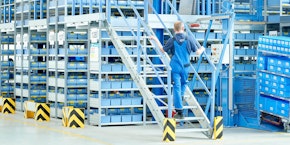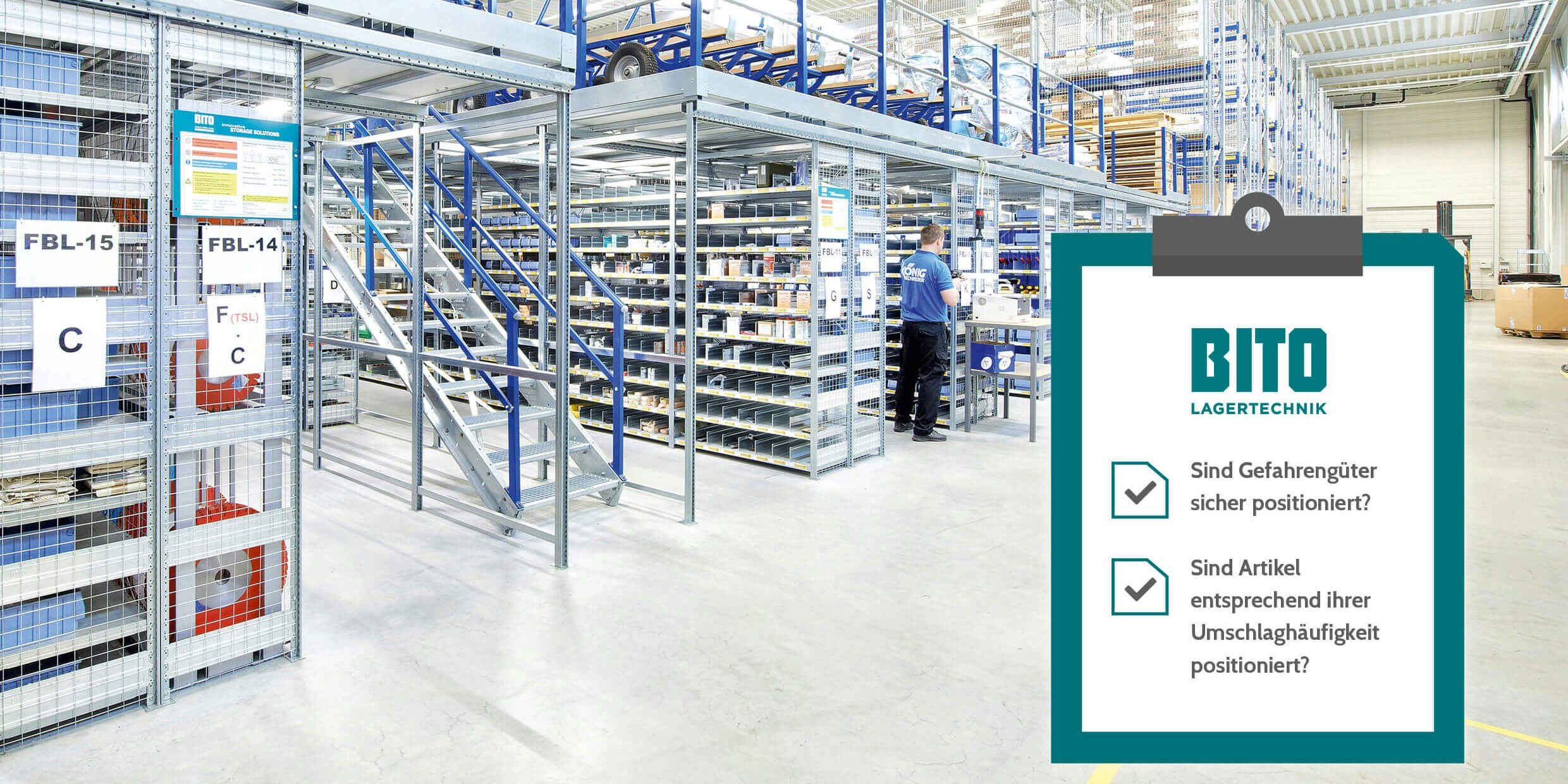Impact protection for racking - why it is so important

Warehouses are busy places - trucks and people move around in the aisles for storage and retrieval, order picking, assembly and maintenance. Warehouses are places where accidents can easily happen. Heavy industrial trucks in particular can cause even large racking systems to collapse if hit hard. This often results not only in major damage to property but also in serious personal injury. To avoid such problems, the company owner and warehouse operator need to prepare a risk assessment to help prevent accidents, not to mention the fact that insurance companies are also interested in preventing damage.
Preparation of a risk assessment
According to the Health and Safety at Work Act, company owners or employers must assess the hazards that may arise before allowing work equipment to be used. However, the law does not specify in detail how a risk assessment is to be carried out - but guidance is available. „HSG76 - Warehousing and storage - a guide to health and safety“ provides advice and guidance that is more specific to racking systems. Necessary and suitable protective measures must be put in place from the assessment and the entire process must also be documented.
Rules and standards for racking impact protection
Safe installation of racking & shelving varies according to the type and size of the system and the nature of the building in which it is being installed. Racking needs to be installed by competent people in line with the manufacturer’s instructions. The floor needs to be level and capable of withstanding the point loading of each upright’s base plate.
In areas where trucks and oher handling equipment is used, the racking should be securely fixed to the floor. HSG76 states that if racking is likely to be struck by lift trucks and other vehicles, it should be protected. Corner uprights in a run of racking are particularly vulnerable and should be suitably provided with a protective device in a conspicuous colour - usually yellow or yellow and black stripes.
A collision guard can be regarded as being of the correct dimension if it can absorb an energy of at least 400 Nm. Industrial strength steel or polymer are both suitable materials for collision guards.
As a good precautionary measure to prevent or at least reduce damage to uprights, upright protection devices have proven to be a good solution, which are attached to all uprights. In contrast to collision protection in the corner areas of the racking, these can also be directly connected to the uprights and are offered by most shelving manufacturers.
What measures apply to different types of racking?
At an internatonal level, DGUV Information 208-043 "Safety of Shelves" provides important information for all types of commercially used steel shelving. It lists the most important European standards regarding construction and equipment regulations and goes into more detail about the requirements of DIN EN 15 635 "Steel fixed racking systems - Use and maintenance of storage equipment". The information document deals in particular with the regular inspection of steel racking systems for damage, persons qualified to inspect, classification of damage, condition of the safety devices (including collision protection), load on the racking, repair, increasing safety in the warehouse, etc.
DIN EN 15 635 and HSG76 require operators to carry out regular inspections and to have them inspected annually by a competent person. This applies to all racking: drive-in, drive-through, flow racking, cantilever, multi-tier systems, pallet racking and mezzanine floors. Following such an inspection procedure, it should be possible to identify protective measures for damaged racking.
Cantilever racking needs to be designed so that the cantilever arms do not project beyond the outer support points of the base of the foot and for the storage of round material and long goods, it is necessary to ensure that the stored goods cannot fall out.
The system-specific advantages of multi-tier installations are safe stairways and levels with stable guard rails. The load-bearing capacity and load-bearing capacity of the racking systems are particularly high due to stiffening cross beams and additional diagonal connections.
What types of protection are available?
The type of barrier recommended will depend on the type of racking or shelving to be protected and the likelihood of possible damage. If the likelihood of impact is low and the barrier is more designed to prevent injury to people, examples would be: foam impact protection such as corner and edge protection profiles, solid surface protection and pipe protection profiles. Other typical solutions are safety markings and retractable barrier systems for separating traffic and work areas.
With impact protection and warning profiles, serious damage and injuries to inventory and employees can be avoided. In a working environment, they tend to be used on internal transport routes, on machines and vehicles, mainly on corners and edges. They need to be highly visible so they are usually designed in the warning colours of yellow and black but also sometimes in red and white.
Furthermore, impact protection profiles can also be provided with light-reflective foil to ensure visibility even in bad weather conditions. They can be individually cut to the desired length and have extremely good adhesive strips. If required, the impact protection profiles can be fixed with screws or nuts & bolts. In principle, the more impact protection and safety markings provided, the more employees are protected.
Which products are suitable for high safety standards?
There is a wide selection of options available for racking protection and, after a company has carried out the appropriate risk assessment, they will have a clearer idea of what is required. BITO advocates upright protectors, flexible traffic barriers, safety railings, footpath separation railings, column protectors, shelf edge impact protection, bollards and rack end barriers.
Other elements of racking safety are addressed by other products. For example, if maintenance work is required on pallet flow racking, BITO offers the the PLS Access Kit. This is a system of harnesses and hooks to enable the user to safely remove items such as shrink wrap or strapping that have become lodged in rollers.
Another product offered by BITO is the perforated steel shelf which is designed for use in areas where a sprinkler system is required. The perforated shelf allows water to pass through, causing reduced damage to stock. In principle, the warehouse experts recommend using more than the legally required minimum package of safety accessories.


